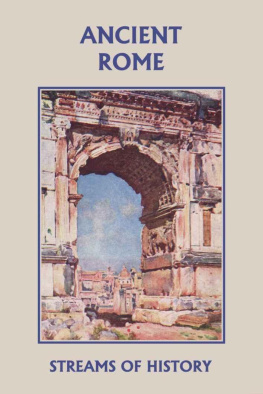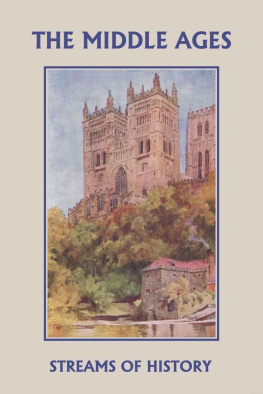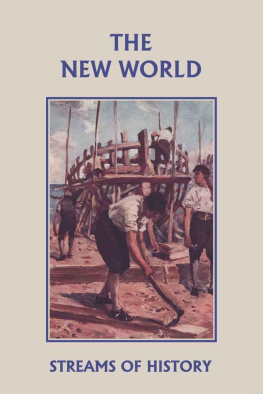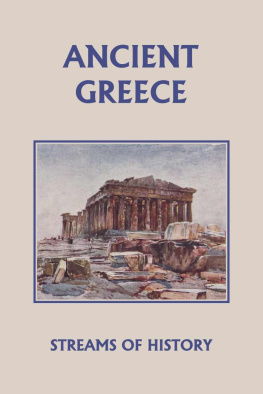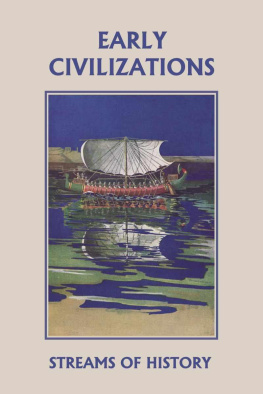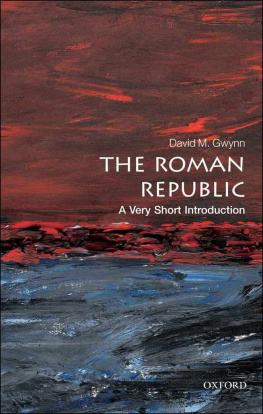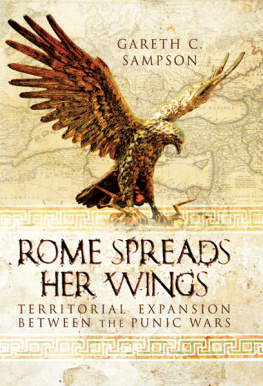Ancient Rome
by
Ellwood Wadsworth Kemp
Yesterday's Classics
Chapel Hill, North Carolina
Cover and Arrangement 2010 Yesterday's Classics, LLC
All rights reserved. No part of this book may be reproduced or retransmitted in any form or by any means without the written permission of the publisher.
This edition, first published in 2010 by Yesterday's Classics, an imprint of Yesterday's Classics, LLC, is an unabridged republication of the work originally published by Ginn and Company in 1902. This title is available in a print edition (ISBN 978-1-59915-256-1).
Yesterday's Classics, LLC
PO Box 3418
Chapel Hill, NC 27515
Yesterday's Classics
Yesterday's Classics republishes classic books for children from the golden age of children's literature, the era from 1880 to 1920. Many of our titles are offered in high-quality paperback editions, with text cast in modern easy-to-read type for today's readers. The illustrations from the original volumes are included except in those few cases where the quality of the original images is too low to make their reproduction feasible. Unless specified otherwise, color illustrations in the original volumes are rendered in black and white in our print editions.
Contents
The Geography of Italy
I F you will take a glance at the map of Europe, you will see that not very far west of Greece, extending seven hundred miles down into the Mediterranean Sea, is a slender peninsula which looks very much like a great boot. It seems to have its back turned toward the back of Greece and is drawn up to kick, as if it were a ball, the little island which you see near it. This peninsula is Italy, and the island is Sicily, but it is mostly of the peninsula that we wish first to learn.
Italy extends far out into the sea, and seems to be almost in the center of it. Westward, at no very great distance, lies the peninsula of Spain. Eastward, and scarcely farther away than Spain, are Egypt and the lands of the Phoenicians and of the Jews. Greece is so near, that standing on the eastern shore of Italy on a bright, clear day, one can see the dim outlines of its western coast; and Africa is only a few hours sail to the south. Any one of these countries can be reached easily and quickly from Italy. In fact, Italy is the central country of the Mediterranean Sea.
Italy differs greatly from Greece in shape. Greece is made up of a large peninsula, which in turn consists of many smaller ones. On a map it looks somewhat like a maple leaf, being cut up into many narrow, sharp points, or like a palm to which are attached the stubby fingers.
Italy is not so. It is of an average width of about one hundred miles at all places except in the north, and has only a few sharp projections. Since the whole peninsula is shaped like a boot, one of the projections may be called the toe; another looks like a rather high heel; the third one, on its back, if it were only lower down, would look very much like a spur on the heel.
You may think of Italy in general as being about once the width, twice the length, and twice the extent of Florida. As I have already told you, scarcely any part of it is more than a hundred miles wide, and it is only six or seven times as long as wide. At its northern end, where it spreads out into the high top of the boot, and is really no longer a peninsula, it becomes about three times as wide as before. Its northern boundary is formed by the high and rugged Alps, which extend in a kind of half-circle from the Mediterranean to the Adriatic Sea, thus, like a mighty wall, shutting Italy off to a great extent from the rest of the continent. Through these mountains there are very few passes, and even these are very rugged and difficult to cross, for they are filled with deep snows and large glaciers. Italy thus formed in ancient times a kind of out-of-the-way place, in which her greatest city, Rome, developed without much interference from the barbarians of the North.
Most of this wider part of Italy just south of the Alps (now called the Plain of Lombardy) forms a level expanse about as large as Indiana. It is the richest part of all Italy. The melting snows of the Alps start many streams, which flow down the mountain sides and unite to form the River Po, which flows eastward through the plains and empties into the Adriatic Sea. The little streams that come tumbling down the mountain side are very swift and carry down a large amount of rich soil. This soil, being washed down into the plain below and spread out over the valley, makes the Po valley very productive.
If we should go there today we should find great fields of waving grain and large groves of mulberry trees. On the Adriatic, north of the mouth of the Po, the interesting city of Venice now stands on more than a hundred little islands, and the gondolas sail on its streets of water, arched over by hundreds of bridges. But long ago, when Rome was beginning to rise, there was no Venice, and on the plain there were but few fields of grain and groves of mulberry trees. Here, where now all is so beautiful, were then only large, unhealthy marshes and many low sandy islands,the homes of a few scattered fishermen. Through these islands and swamps the dirty waters of the Po found their way slowly to the sea in many shallow mouths. Thus, because of the swamps and the absence of good harbors, northern Italy did not have great cities grow up in it in early times.
On the south side of the northern plain, beginning where the Alps meet the Mediterranean, starts another great chain of mountains. At first they so closely follow the shore that a road can barely creep between the foothills and the sea. These mountains run at first eastward till they almost cross the peninsula, and then, bending southward, continue throughout the length of Italy, making a backbone for the country. Down into the toe of the boot they extend, and, at last, reaching the sea, jump over the strait into the island of Sicily. These are the Apennines. They do not have the many pointed peaks, nor are they so high, as the rugged and snowy Alps. Their sides, even to the very top, are covered with fine forests of oak, elm, pine and chestnut, thus giving plenty of timber for building ships. Rome found these forests of great value when she came to build a navy with which to fight the Carthaginians on the sea.
You must thus imagine Italy as having had a belt through its center from north to south, bristling with mountain chains and peaks, through which, however, were many easy passes, and on both sides of which were hilly plains, sloping down to the sea. Between the chains, among the peaks, and along the mountain sides, lay many valleys in which herds of long horned cattle and large flocks of sheep, herded by men who loved a rough mountain life, found excellent pastures.
The eastern slope of Italy is short and steep, and so rugged that it is only fitted for people who can live on the products of a shepherd's life. There are few harbors on the coast, and there is little to invite people who are seeking homes. For this reason, as I have already said, it was the back of Italy which was turned toward Greece and the east. On the west side of the mountains the slope is gentler, and contains several quite large fertile plains where grains may be raised; and in the south, near the toe, the climate is so mild that tropical fruits, such as the olive, the orange and the fig, are found in great abundance. Grape vines grow in great numbers, and climbing to the very tops of the trees, produce large quantities of fruit. The western coast contains several good harbors. Thus the face of Italy may be said to be turned toward Spain and the west.

